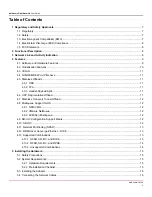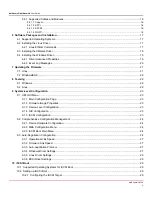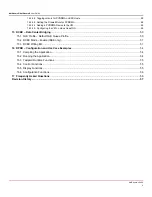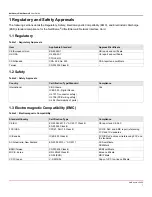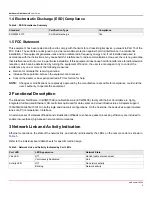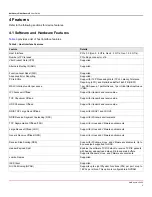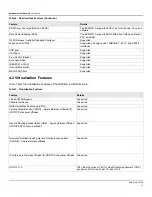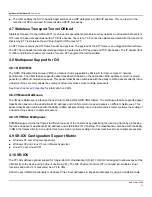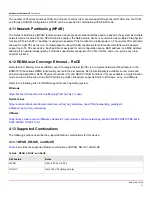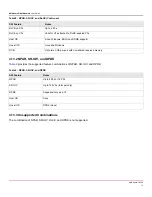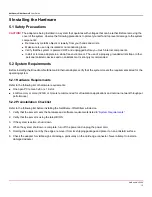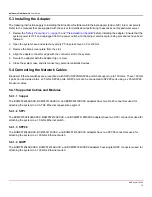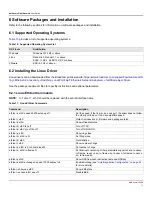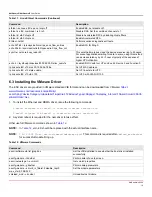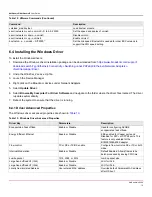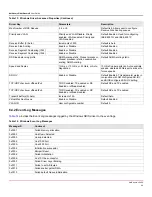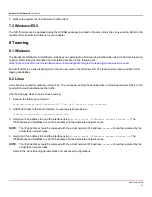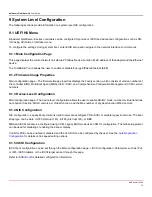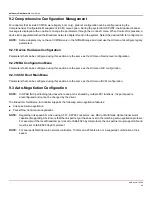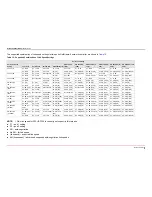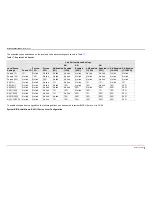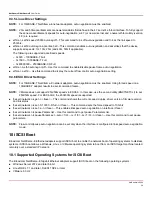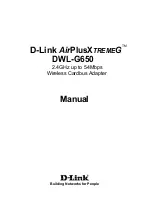
NetXtreme-UG100
13
NetXtreme-C/NetXtreme-E
User Guide
The number of Physical Functions (PFs) and Virtual Functions (VFs) are managed through the UEFI HII menu, the CCM,
and through NVRAM configurations. SRIOV can be supported in combination with NPAR mode.
4.11 Network Partitioning (NPAR)
The Network Partitioning (NPAR) feature allows a single physical network interface port to appear to the system as multiple
network device functions. When NPAR mode is enabled, the NetXtreme-E device is enumerated as multiple PCIe physical
functions (PF). Each PF or “partition” is assigned a separate PCIe function ID on initial power on. The original PCIe definition
allowed for eight PFs per device. For Alternative Routing-ID (ARI) capable systems, Broadcom NetXtreme-E adapters
support up to 16 PFs per device. Each partition is assigned its own configuration space, BAR address, and MAC address
allowing it to operate independently. Partitions support direct assignment to VMs, VLANs, and so on, just as any other
physical interface.
4.12 RDMA over Converge Ethernet – RoCE
Remote Direct Memory Access (RDMA) over Converge Ethernet (RoCE) is a complete hardware offload feature in the
BCM5741X that allows RDMA functionality over an Ethernet network. RoCE functionality is available in user mode and
kernel mode application. RoCE Physical Functions (PF) and SRIOV Virtual Functions (VF) are available in single function
mode and in mutli-function mode (NIC Partitioning mode). Broadcom supports RoCE in Windows, Linux, and VMware.
Refer to the following links for RDMA support for each operating system:
Windows
https://technet.microsoft.com/en-us/library/jj134210(v=ws.11).aspx
Redhat Linux
https://access.redhat.com/documentation/en-us/red_hat_enterprise_linux/7/html/networking_guide/part-
infiniband_and_rdma_networking
VMware
https://docs.vmware.com/en/VMware-vSphere/6.7/com.vmware.vsphere.networking.doc/GUID-E4ECDD76-75D6-4974-
A225-04D5D117A9CF.html
4.13 Supported Combinations
The following sections describe the supported feature combinations for this device.
4.13.1 NPAR, SR-IOV, and RoCE
Table 8
provides the supported feature combinations of NPAR, SR-IOV, and RoCE.
Table 8: NPAR, SR-IOV, and RoCE
SW Feature
Notes
NPAR
Up to 8 PFs or 16 PFs
SR-IOV
Up to 128 VFs (total per chip)



